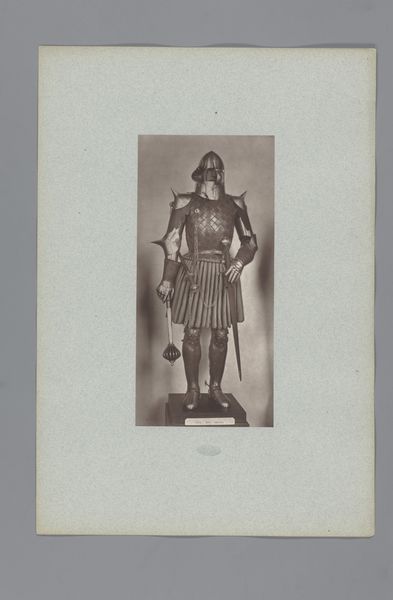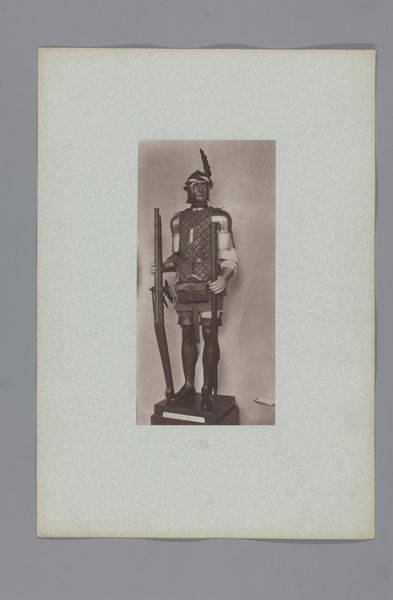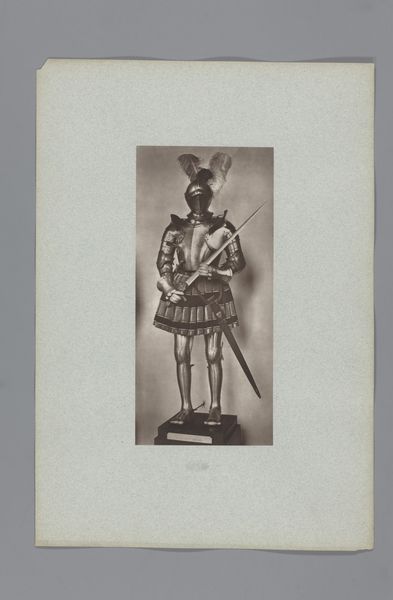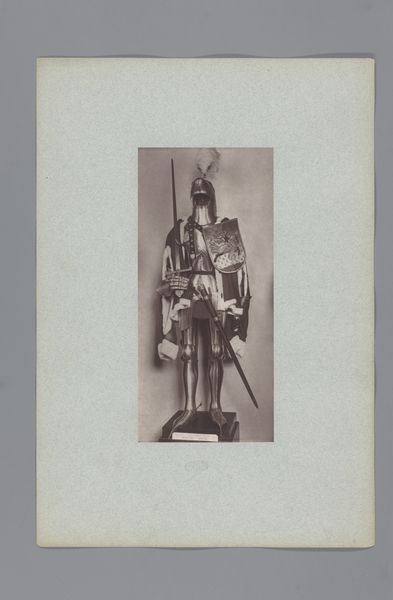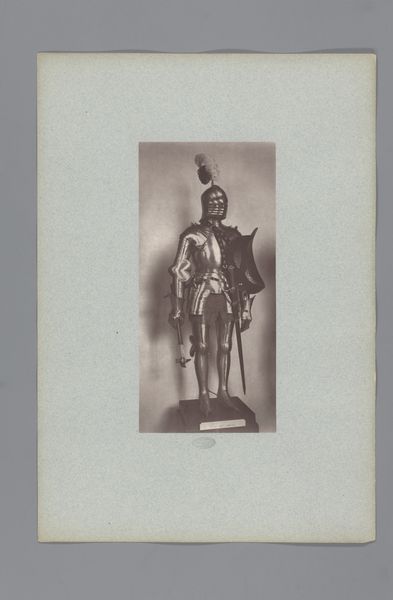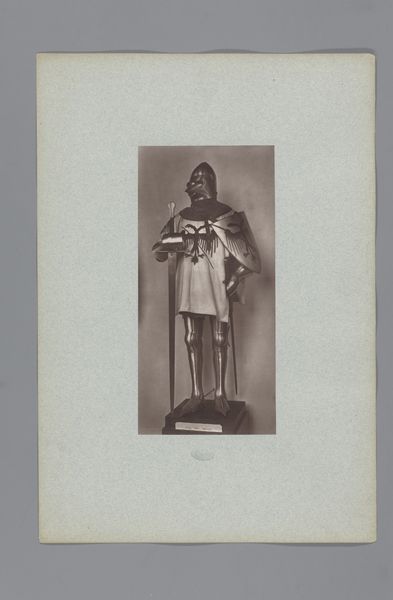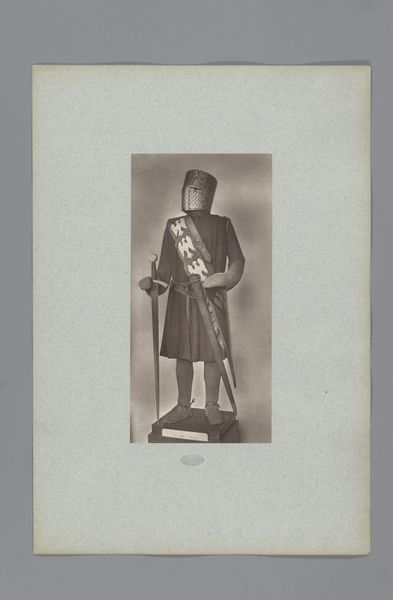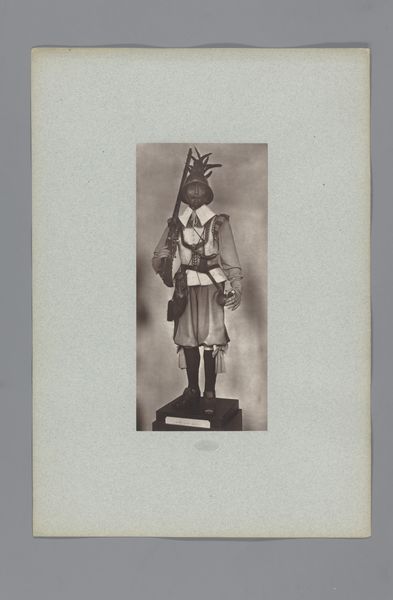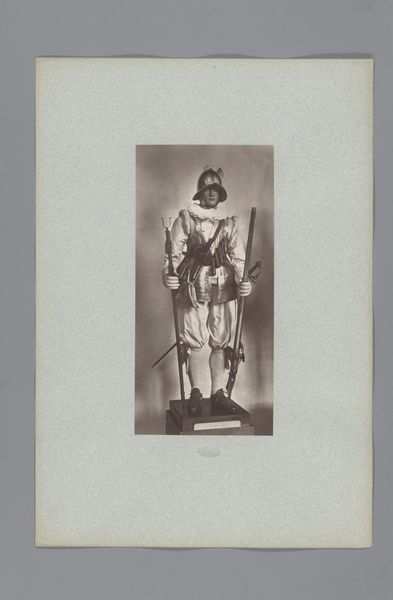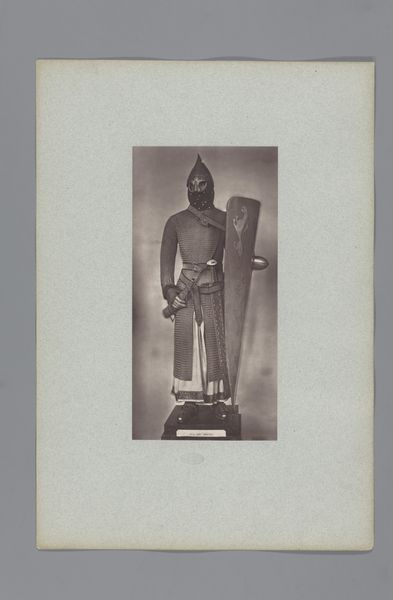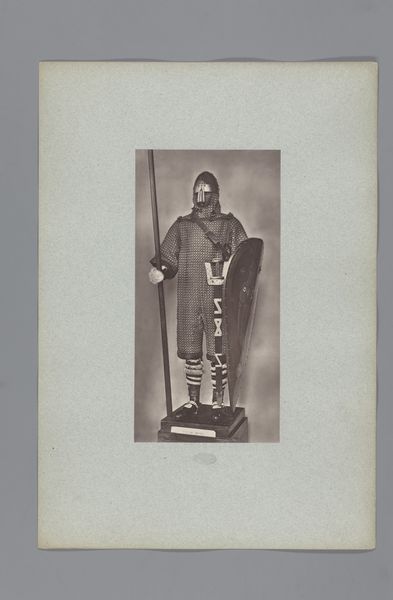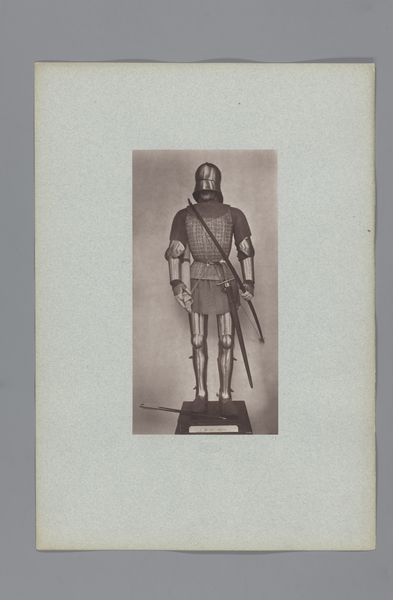
Laat-13de-eeuws harnas met zwaard en schild uit het leger van Filips IV van Frankrijk, uit de collectie van het Musée d'Artillerie in Parijs before 1882
0:00
0:00
photography, gelatin-silver-print
#
portrait
#
medieval
#
figuration
#
photography
#
gelatin-silver-print
#
history-painting
Dimensions: height 279 mm, width 120 mm
Copyright: Rijks Museum: Open Domain
Curator: This photograph, captured before 1882 by an anonymous photographer, presents a late-13th-century suit of armor with a sword and shield. It hails from the army of Philip IV of France and was originally part of the collection at the Musee d'Artillerie in Paris. It is a gelatin silver print. What's your immediate take? Editor: It's somber, almost ghostly. The gray tones amplify the feeling of history weighing down this figure. There’s a stillness that contrasts sharply with what the armor represents: violence, conquest, and power. It’s posed yet inert. Curator: Indeed. What interests me is the layering of representation: a photograph of a museum object which itself represents a historical figure. Each layer abstracts us further from the reality of that figure and the battles they might have fought. Editor: It really makes you think about how objects get historicized. This suit of armor, now displayed statically, served a very particular purpose: to protect a body in battle, enforce a rigid social order, expand territory, exert dominance. When we strip it of its action, of its lived use, what’s left? Curator: A symbol, perhaps. The cross emblazoned on the chest—a visual declaration of the divine right to rule. One might consider the role of photography in immortalizing this symbolism. Think about the legacy this photograph reproduces and reinforces. Editor: And how that divine right justified, and continues to justify, so many systemic oppressions. Looking at this, I can't help but think about the ways in which institutions uphold these narratives, silencing voices that challenge these power structures. Curator: The shadows are particularly potent. They conceal details, turning cold, hard steel into soft forms that hint at vulnerability—which is probably fanciful on my part. The image evokes something deeply unsettling about history itself. It whispers of events forever obscured by time and self-serving chronicles. Editor: The stillness feels like a kind of enforced silence, actually, a lack of movement or dissent or any opposing narratives to the power represented in that suit of armor. What does it mean to see power so rigidly displayed, divorced from any ethical considerations? Curator: The details draw me in: the eagle crest atop the helmet, the intricate designs on the sword hilt. The anonymous photographer, working well after the armor's creation, invites us to contemplate the medieval world through a modern lens. And wonder how far removed, if at all, we are from it. Editor: This isn't just about remembering the past; it is about interrogating it. Whose stories are told, and whose are erased, by the careful presentation of these objects? And more importantly, what does it say about how we engage with structures of power in our own time?
Comments
No comments
Be the first to comment and join the conversation on the ultimate creative platform.
